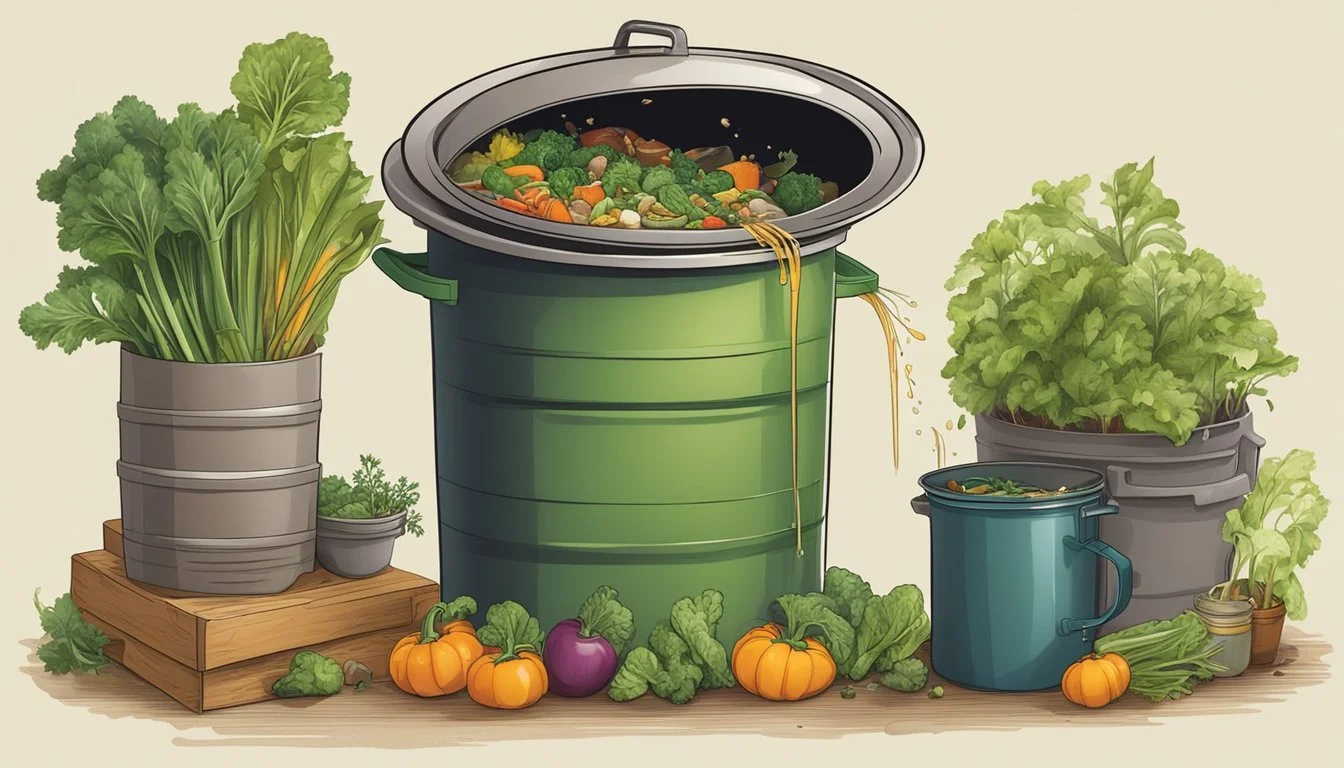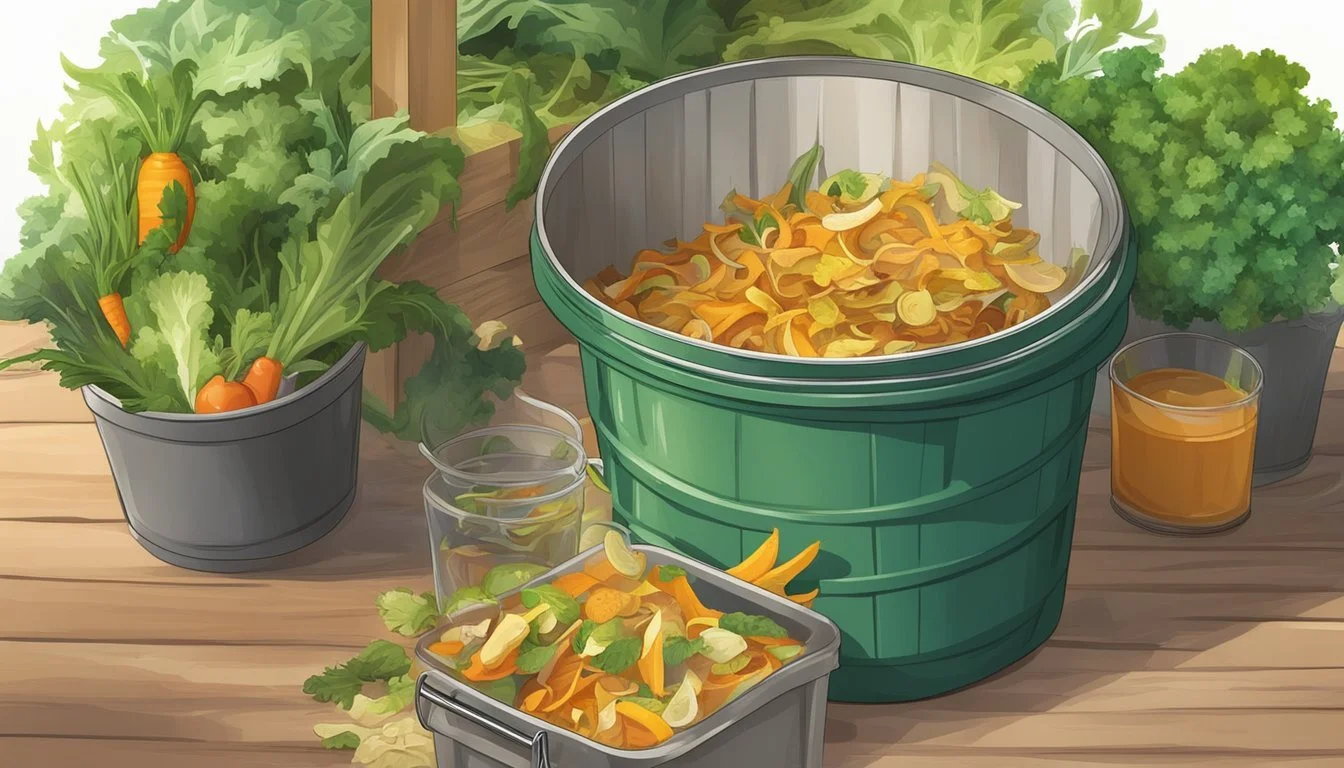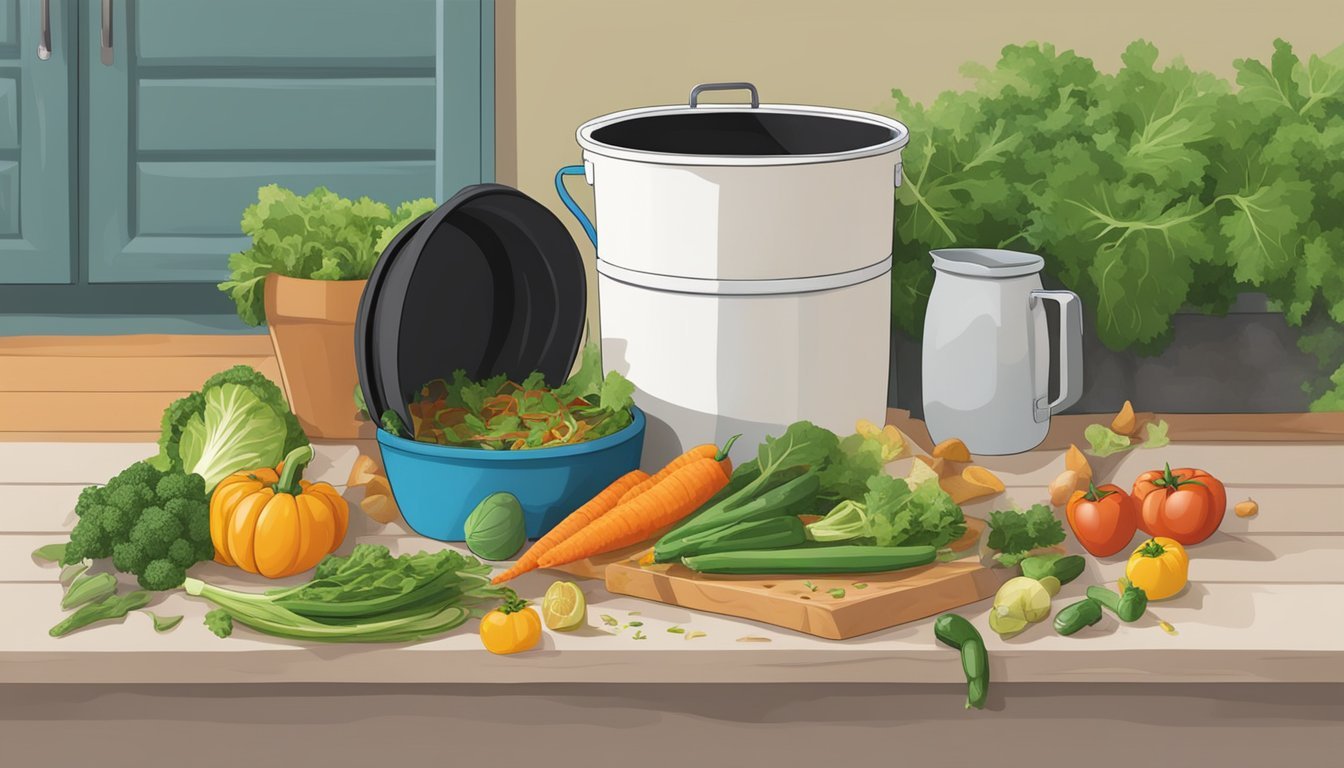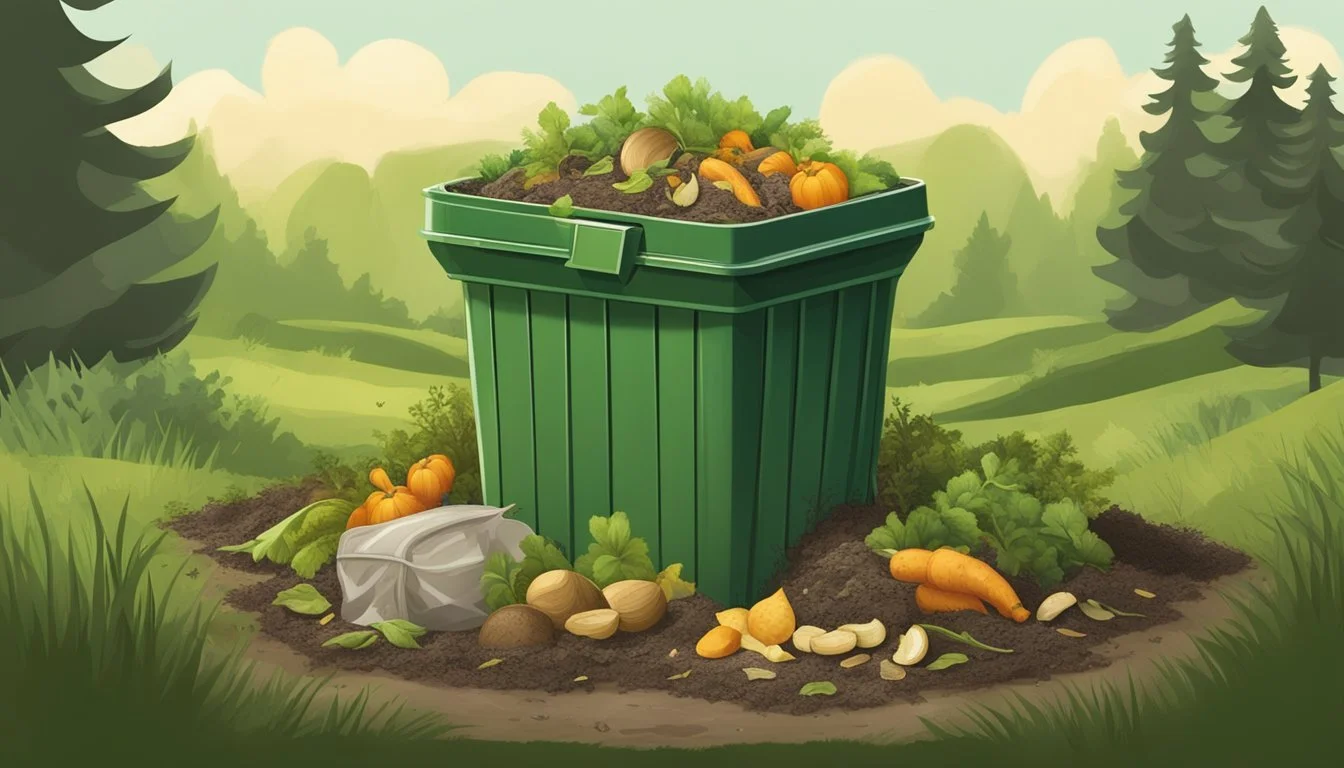Can You Compost Vegetable Broth?
Understanding Its Impact on Composting Practices
Composting is the process of recycling organic matter, such as kitchen scraps, into a valuable amendment for soil. It's a practice that both reduces waste and benefits the garden. When it comes to vegetable broth, or any broth made primarily from vegetables, the question arises as to whether the liquid itself can be composted. The simple answer is that while the liquid isn't typically composted, the solid organic materials that remain after straining the broth are ideal for composting.
Vegetable broth is made by simmering vegetable scraps in water, which extracts nutrients and flavor. These scraps commonly include onion peels, carrot ends, celery leaves, and other trimmings that might otherwise be discarded. Once the broth is strained, these cooked vegetable remnants retain many of the same properties that make raw kitchen scraps suitable for composting, such as carbon, which feeds the microorganisms in the compost pile.
However, adding liquid to a compost pile is a nuanced task. Excess moisture can lead to a soggy compost pile, which can become anaerobic and emit unpleasant odors. If someone wishes to compost the liquid portion of the broth, they should do so sparingly and ensure it is well-balanced with dry, carbon-rich materials to maintain the necessary moisture balance. As a result, composting the solid remnants of vegetable broth is a common practice, while the liquid is often used up or disposed of in other environmentally-friendly ways.
Understanding Vegetable Broth
Vegetable broth is a flavorful liquid used as a base for many dishes. This section will focus on differentiating broth from stock and the common ingredients that impart the rich flavors and aromas found in homemade vegetable broth.
Defining Broth and Stock
Broth and stock are often used interchangeably, but they have distinct differences. Broth is typically made by simmering vegetables and can include meat (though not in vegetable broth), seasoned with herbs and spices. The focus is on a light and flavorful liquid served as is or used as a cooking ingredient. Stock, by contrast, emphasizes the extraction of flavors from bones and connective tissue, resulting in a richer, more robust base that is often used as a foundation for other recipes, such as soups and sauces.
Common Ingredients in Homemade Vegetable Broth
A standard homemade vegetable broth includes a variety of vegetables to achieve a complex flavor profile. Key ingredients often contain:
Essential aromatics: onions, carrots, and celery (how long does celery last?) form the traditional "mirepoix" base.
Herbs: parsley, thyme, and bay leaves are classic choices to enhance flavor.
Seasoning: garlic, salt, pepper, oregano, and sometimes basil can be added according to taste.
Additional Vegetables: mushrooms, leeks, tomatoes, kale, and zucchini introduce depth and body.
Oil: a splash of olive oil helps to sauté the vegetables, eliciting their natural sweetness and flavors before water is added.
The usage of aromatic herbs and a medley of vegetables contributes not just to the taste but also to the nutritional value of the broth. While some cooks advise against the inclusion of cauliflower in large amounts due to potential bitterness, it can be used in moderation. Each ingredient plays a pivotal role in creating the wholesome, savory essence that characterizes a well-made vegetable broth.
Health and Nutrition
Vegetable broth benefits overall health by providing essential nutrients while being low in calories. It supplements diets with its rich mineral and vitamin content.
Nutritional Benefits of Vegetable Broth
Vegetable broth is a healthy addition to any meal plan. It's low in calories and high in nutrients, making it an excellent option for those looking to maintain a balanced diet. The broth typically contains a variety of vitamins and minerals derived from its vegetable components.
Vitamins: Vegetables like carrots, celery, and onions contribute vitamins A, C, E, and K to the broth.
Minerals: Integral to bone and heart health, calcium and magnesium are present in vegetable broth.
Concerning sodium levels, commercial vegetable broths can be high in sodium, which may not be suitable for individuals monitoring their salt intake. However, homemade broths can be tailored to contain less sodium by limiting the addition of salt.
The inclusion of nutritional yeast in some vegetable broth recipes adds B vitamins and a cheesy, savory flavor without the need for dairy, which can benefit vegans and those with lactose intolerance.
In summary, vegetable broth brings forth a spectrum of nutritional advantages: vitamins, minerals, and the potential health benefits of low-calorie, high-fiber components make it a valuable addition to one's diet, especially when one is conscious of sodium levels or seeking to include supplementary nutrients like those from nutritional yeast.
Making Your Own Vegetable Broth
Creating a homemade vegetable broth is a resourceful way to utilize kitchen scraps and enhance the flavor of numerous dishes. Primarily using water, vegetables, and herbs, one can easily craft a nutritious foundation for cooking.
Choosing Vegetables and Herbs
For a balanced broth, select a variety of vegetables, such as onion skins, carrot peels, and celery ends. It is advisable to use moderation with vegetables like broccoli (how long does broccoli last?)and cauliflower to avoid bitterness. Garlic papers, tomato ends, and bell peppers can be included for depth of flavor. Fresh herbs like parsley, thyme, and bay leaves impart an aromatic quality.
The Cooking Process
The process begins by simmering all selected vegetable scraps and herbs in a large stockpot or slow cooker filled with water. A low and slow cook time of at least two hours is key, as it extracts the flavors and nutrients from the ingredients. This method eliminates the need for constant supervision, allowing the flavors to meld.
Straining and Storing the Broth
Once the broth has cooked, it must be strained through a cheesecloth or fine mesh to remove all solid pieces. The final liquid should be clear and free of debris. For storage, cool the broth and then transfer it to containers. It can be stored in the refrigerator for up to a week or frozen for several months, ensuring that homemade broth is always on hand for recipes requiring prep time and cook time with a flavorful liquid base.
Composting Vegetable Broth
In the realm of waste management and sustainability, composting stands out as a viable method to transform kitchen scraps and leftover vegetable matter into nutrient-rich soil. This section elucidates whether vegetable broth can be a part of this eco-friendly process, the advantages of composting food waste, and the proper techniques to ensure successful decomposition.
Can You Compost Vegetable Broth?
Composting vegetable broth is not recommended directly due to its liquid form which can disrupt the balance in a compost bin, leading to odor issues and slowed decomposition. However, the solid remnants from making vegetable broth, such as the leftover vegetable scraps, are highly suitable for composting. These scraps enrich the compost with nutrients and facilitate the creation of wholesome dirt.
Benefits of Composting Food Waste
Reduction of Landfill Waste: Composting food scraps instead of sending them to landfills prevents the production of methane—a potent greenhouse gas—during their anaerobic decomposition.
Soil Enrichment: Compost acts as a natural fertilizer, adding essential nutrients back into the soil which promotes plant growth.
Proper Composting Techniques
A proper balance of greens (nitrogen-rich materials like food scraps) and browns (carbon-rich materials like dry leaves) is crucial in composting. Here are simple steps to maintain an efficient compost bin:
Balance: Aim for a ratio of 3 parts browns to 1 part greens by volume.
Aeration: Regularly turn the compost to oxygenate it, which aids in the breakdown process to avoid rot and foul smells.
Moisture: Ensure the compost pile is as moist as a wrung-out sponge to support the microorganisms breaking down the scraps.
Size: Chop or shred large pieces of waste to increase surface area for quicker decomposition.
By diligently following these guidelines, one can turn vegetable scraps into valuable compost, contributing positively to environmental sustainability.
Utilizing Leftover Ingredients
There are sustainable and flavor-enhancing ways to utilize leftover ingredients from homemade broths. One can either repurpose vegetable scraps into the broth itself or transform the resulting broth into the base of other dishes.
Reusing Vegetable Scraps
Vegetable scraps, such as mushroom stems, herb stems, onion skins, bell peppers, squash, corn cobs, cabbage leaves, and broccoli stems, can be saved and reused to make a rich and savory stock. These components offer a variety of flavors and are often discarded, but they are valuable in creating a nutritious base for soups and sauces. When making homemade broth:
Save: Collect and store vegetable scraps in the freezer until enough accumulates to make broth.
Simmer: Combine with water and simmer to extract the flavors and nutrients.
Strain: Remove the solids, leaving behind a flavorful liquid.
Pro tip: Avoid using vegetables like cabbage or broccoli in large quantities as they can overpower the broth with a strong flavor.
Creating Other Dishes with Broth
Homemade broth serves as a versatile ingredient that can elevate the taste of numerous dishes. Here are specific ways to incorporate it:
Soups: Use as a base for soups, providing more depth than water.
Sauces and Gravy: Enrich sauces and gravies with the broth for extra flavor.
Rice and Quinoa: Replace water with broth when cooking grains like rice or quinoa to infuse them with aroma and taste.
Vegan Dishes: A vegetable broth can be the cornerstone of a hearty vegan dish, providing a full-bodied flavor without any animal products.
These uses for leftover vegetable scraps and broth ensure maximum utilisation of food while also minimizing waste.
Storing Vegetable Broth
Proper storage techniques are critical for maintaining the quality and extending the shelf life of homemade vegetable broth. Different methods suit various needs, whether one prefers quick access or long-term preservation.
Refrigeration vs. Freezing
Refrigeration offers an immediate solution for vegetable broth storage, making it accessible for day-to-day use. Broth should be stored in an airtight container to prevent contamination and odor absorption from other foods:
Fridge shelf life: 5 to 7 days
Freezing extends the broth's shelf life considerably and is perfect for long-term storage. To freeze vegetable broth, one can use:
Freezer bags: Lay them flat for space-saving storage.
Ice cube trays: Once frozen, transfer cubes to a bag for easy portioning.
Freezer shelf life: up to 6 months
How to Extend Broth Shelf Life
To maximize the longevity of vegetable broth, the following steps should be taken:
Cool the broth quickly after cooking by placing the pot in a sink filled with ice water.
Transfer the cooled broth to storage containers, leaving some space to allow for expansion if freezing.
Label the containers or bags with the date of storage to track shelf life.
Keep the fridge or freezer at a consistent temperature; the fridge at 40°F (4°C) or below, and the freezer at 0°F (-18°C) or lower.
Troubleshooting Common Issues
When incorporating vegetable broth into compost, one may occasionally encounter changes in flavor that are unexpected and undesirable. The key to remedying these issues lies in identifying the cause and adjusting the ingredients accordingly.
When Broth Turns Bitter or Sour
Flavors in vegetable broth can become bitter or sour due to the presence of certain vegetables that when overcooked release substances that impart these flavors. Cruciferous vegetables such as brussels sprouts and cabbage are common culprits. To correct this:
Dilute the broth by adding more water.
Balance the flavor by incorporating sweet vegetables like carrots or onions.
Adjusting Seasonings and Saltiness
If the broth becomes too salty, it can significantly affect the flavor profile. Over-seasoning with spices like pepper can also lead to a pungent and overpowering taste. For adjusting seasonings and saltiness:
Add sliced potatoes or sugar to absorb some of the salt.
Introduce additional liquid or unsalted broth to dilute the saltiness.
Fat can also help mellow out the intensity of the salt and seasonings.
Review of Commercial Vegetable Broths
When evaluating commercial vegetable broths, discerning consumers consider factors such as taste comparison with homemade broths and ingredient composition. This section delves into the nuances of store-bought options while providing a critical review of their culinary performance.
Comparing Homemade to Store-Bought Options
Commercial vegetable broths often strive for a balanced flavor profile to ensure they complement a variety of dishes without overwhelming them. A well-crafted store-bought broth should have a harmonious blend of vegetables, emitting a taste that is neither too strong of any single vegetable nor too bland.
Homemade Broth: Typically more flavorful; can be customized to personal taste.
Store-Bought Broth: Convenient and consistent; flavor can vary widely between brands.
Reading Labels and Understanding Ingredients
An informed consumer should scrutinize the labels of commercial broths to understand what they are purchasing. The ingredient list reveals not just the nutritional content but also the flavor potential of the broth.
Ingredients to Look For: A variety of vegetables, sea salt, and sometimes, umami-rich components like seaweed.
Red Flags: High sodium content, artificial flavors, and unnecessary additives.
Consumers often find that some broths taste overly salty, while others may have an unexpected aftertaste, possibly due to the quality of water used in production or the presence of certain preservatives. It is noteworthy that while store-bought broths are generally more expensive per liter than homemade ones, they offer a liquid base ready for immediate use in cooking, saving time and effort.








